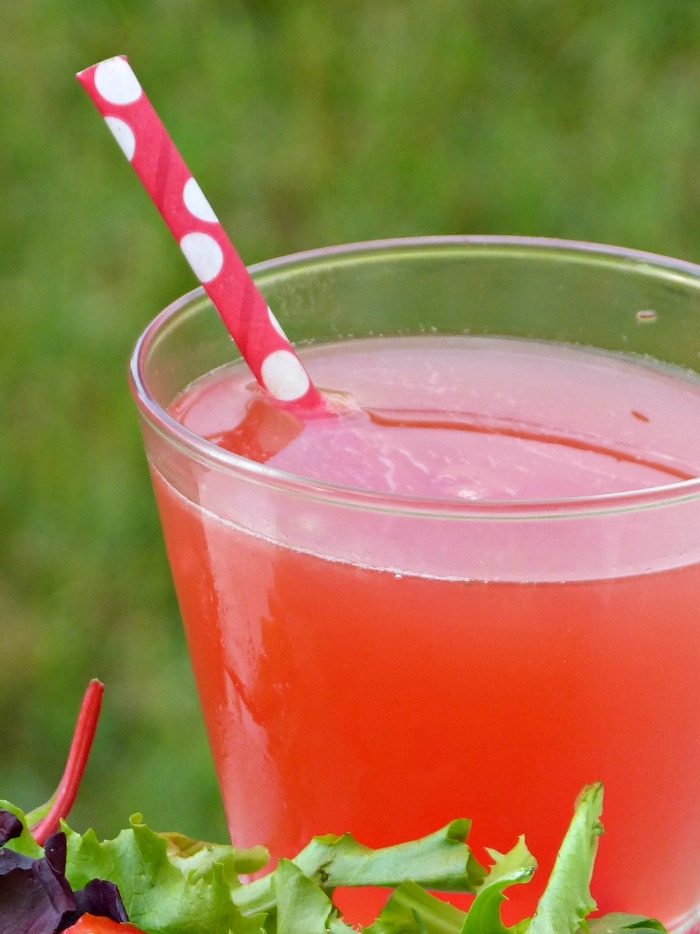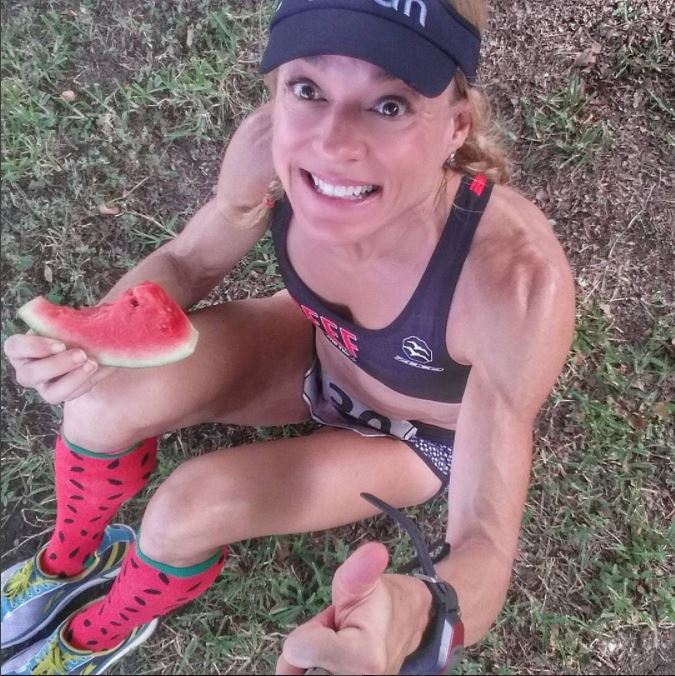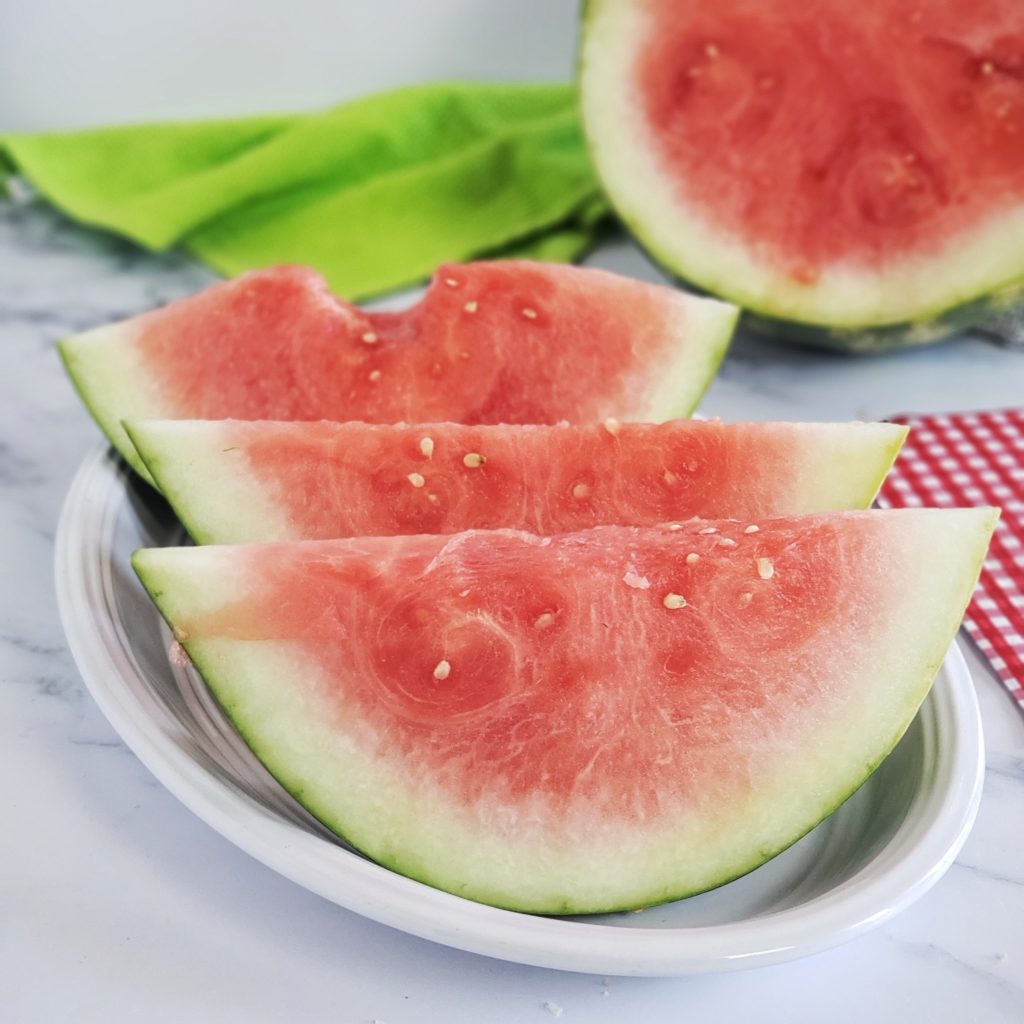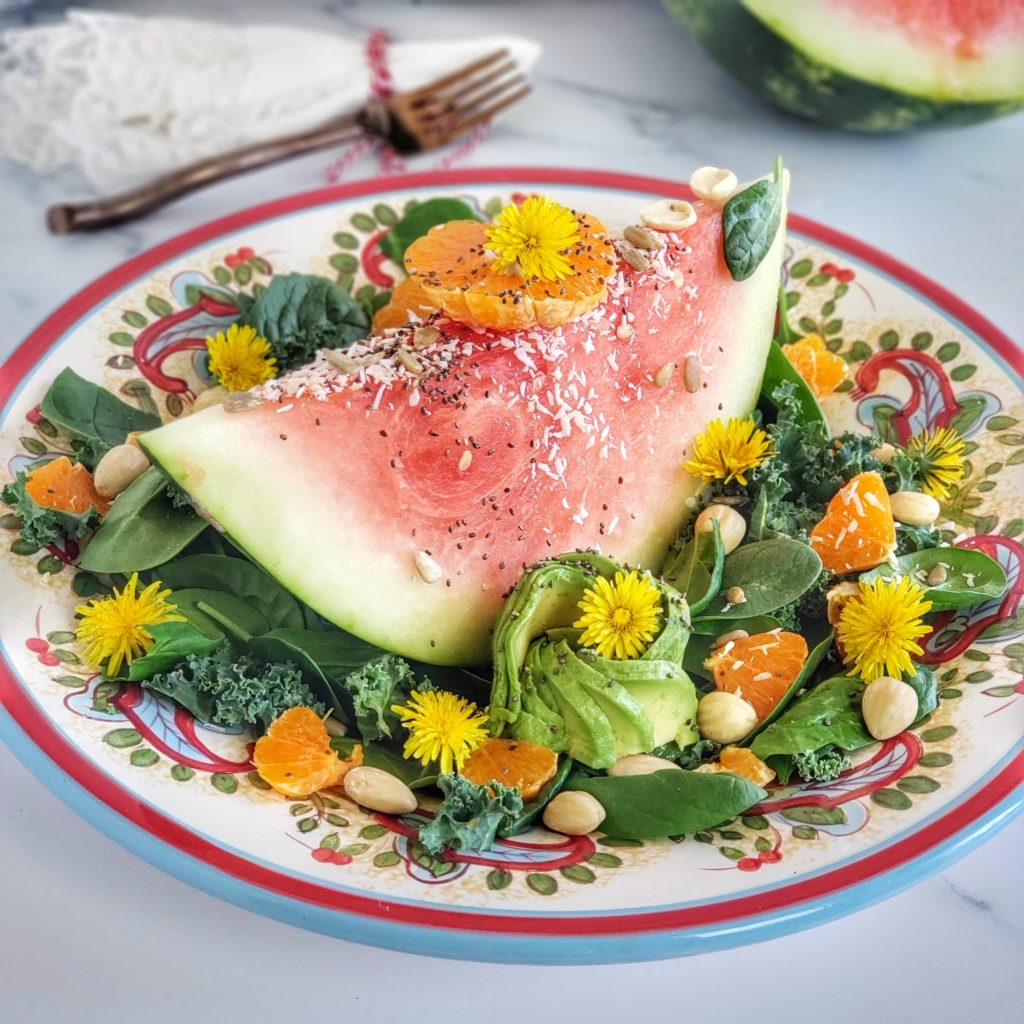This post is sponsored by Watermelon.org. However, all opinions, content, comments and extreme watermelon enthusiasm remain my own.
Watermelon is a wonderful food for runners, athletes and every BODY with an active lifestyle, plain and simple! Over the years, I’ve shared so many healthy benefits of watermelon and creative ways to use watermelon in recipes AND workouts!

As we burst into spring and soon enough into summer, and fill our hours with more outdoor activities and recreation, I just wanted to touch on the fitness-focused nutritional benefits of watermelon. These include 1) hydration, 2) natural energy, 3) workout recovery, 4) important vitamins and antioxidants

HYDRATION: Watermelon is a fruit you can eat and DRINK! You can actually drink watermelon by making watermelon juice, but eating it is a drink in itself – watermelon is 92% water. For example, 16 ounces of watermelon hydrates your body with about 14 ¾ ounces of water! I think that’s why it tastes extra refreshing after a summer run or day working in the yard. There are many other ways to “drink” your watermelon, these are some of my favorites:
Watermelon Electrolyte Ice Cubes: Watermelon juice and lime juice mixed with Himalayan sea salt, baking soda and maple syrup, frozen and meant to be melted straight in the mouth or dissolved in water. A great way to prevent cramping in high sweat-output athletes.
Watermelon Coconut Cream Soda: Cure your cravings for bubbly without drinking sugary, chemical-laden soda with this easy-to-make fountain-style drink made with watermelon juice, coconut cream, sparkling water and stevia.

NATURAL ENERGY: Watermelon is also a source of natural sugars to fuel your adventures. Most runners go further and farther fueled with carbohydrates! Some mistakenly avoid watermelon thinking it is too high in sugar, but really, it’s quite reasonable and most everyone can eat it as part of a balanced diet. To understand this more, you need to realize that the watermelon Glycemic Load (GL) is actually low at 2 for 100grams of watermelon . . . even though the Glycemic Index (GI) which everyone seems to get stuck on is considered higher at 72 on a 100 scale (BTW, GI isn’t everything, calories vitamins and other nutrients are important too – not JUST the GI number and that’s why you need to consider the GL number too). In fact, many nutritionists feel Glycemic Load (GL) gives a more realistic value of how different foods affect blood sugar than GI because it also takes into consideration the amount of carbohydrate in the food, not just how quickly it turns to glycogen. For reference, foods with a low GI level (under 10 considered low, over 20 considered high), are less likely to raise your blood sugar levels.
WORKOUT RECOVERY: Not only does watermelon replenish your body’s glycogen stores after running and rehydrates with fluids, but it also contains L-Citrulline. Exciting new areas of study suggest that L-citrulline (286- 1266 mg per 2 cup serving) in watermelon may help to support vascular health and help maintain healthy blood flow. With respect to athletic benefits, the optimized blood flow created by l-citrulline may help performance and accelerate recovery. Here are a few post workout watermelon beverages I like to enjoy after a run or workout.
Watermelon Beet Workout Recovery Smoothie: A satiating treat after a hard workout – a protein boost for muscles from cottage cheese and the l-citrulline helps lessen next-day soreness.
Hot Spiced Watermelon Lemonade with Collagen: In cooler weather, I can be chilled to the bone – especially once I stop running. This hot drink is a watermelon workout recovery treat that warms me up, provides all the benefits of watermelon but also with some collagen for joint and muscle management, plus turmeric for anti-inflammatory relief.

LYCOPENE & OTHER IMPORTANT NUTRIENTS: Lycopene is a carotenoid in watermelon that makes the hue so beautifully red. In fact, watermelon is the “lycopene leader,” containing higher levels of lycopene than any other fresh fruit or vegetable (12.7 mg per 2-cup serving) – even tomatoes that get a lot of attention. Researchers linking lycopene to benefits in positive cardiovascular health. Also, great news for outdoor lovers! While not a substitution for sunscreen, lycopene in watermelon is an antioxidant that is being studied for its role in sun protection when eaten. A 2-cup serving of watermelon is also a good source of vitamin C (21% RDI) and Vitamin A (18% RDI) and also some b-vitamins, magnesium and potassium.
Here are a couple of my favorite watermelon and tomato recipes, for a double-dose of lycopene and so many vitamins!
Watermelon Veggie Reviver Drink: watermelon, tomato juice, cucumber and a bit of lime and cayenne pepper blended smooth into a tonic that does the body GOOD!
Watermelon, Tomato & Jicama Salad with Tajin Dressing: enjoy the double-punch of lycopene in tomatoes and watermelon (and crunchy jicama) paired with a spicy-sweet dressing.

HOW TO EAT WATERMELON: The easiest way to eat watermelon is to slice it up and enjoy cold! A good watermelon is even delicious room temperature, and some science shows that it could maintain more nutrients that way. One thing to know about watermelon temperature though is that if you buy it cold, it should stay cold. But if it is room temperature, it can last about three weeks from harvesting (so I would say 1 week at home, before cut open, just to be safe).

I also think watermelon is amazing with simple seasonings (check out these 4 Ways to Season Watermelon that will Blow Your Mind) or even grilled. Also, another way I add watermelon to my day is just to use as an ingredient in salads (like this quinoa watermelon salad) or no-recipes “throw everything together” watermelon salads (see above) with whatever I have on hand! Today it was watermelon, oranges, avocado, spinach, kale, Marcona almonds, coconut, and dandelion flowers (yes, they are edible)!
How are you incorporating watermelon into your active lifestyle?
